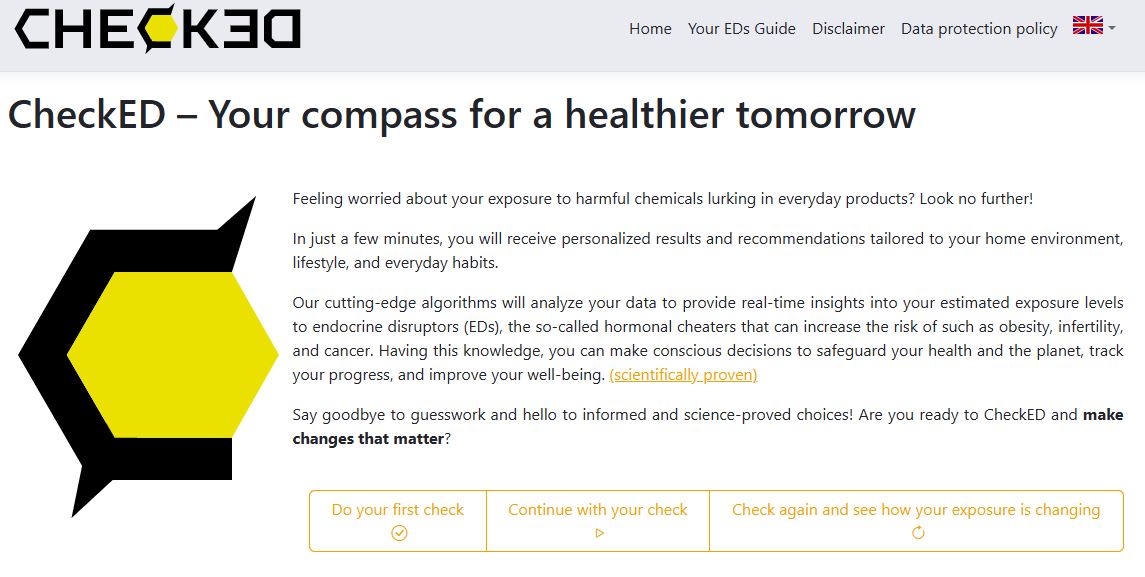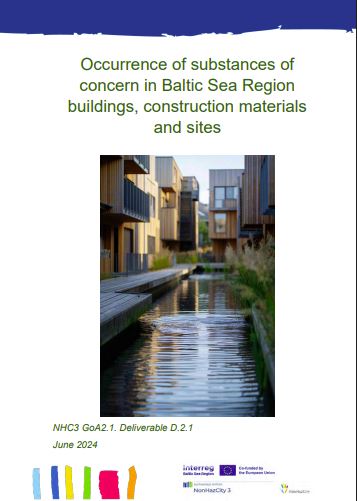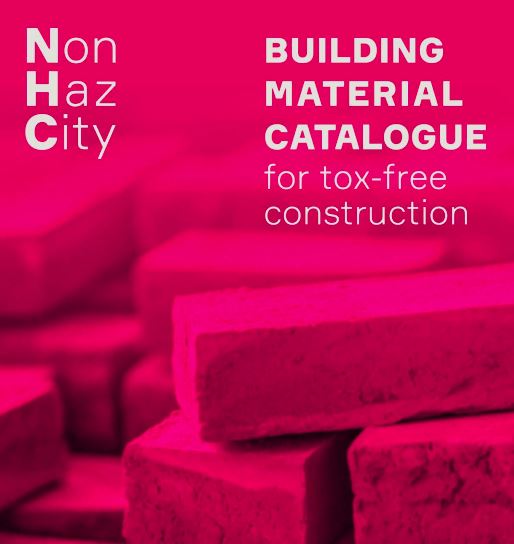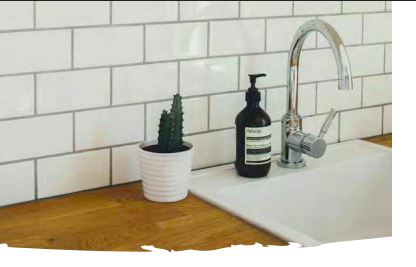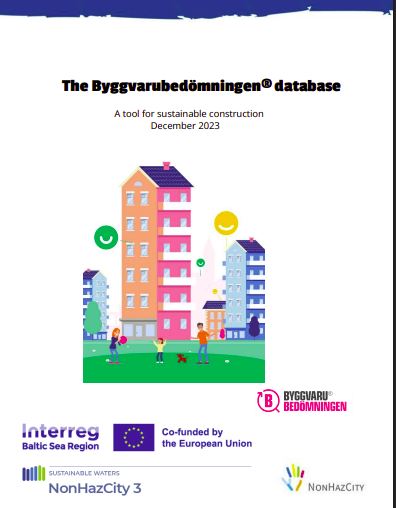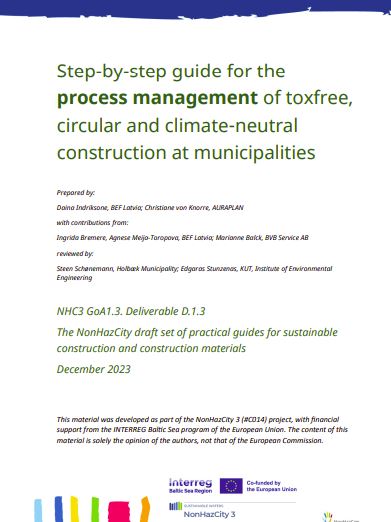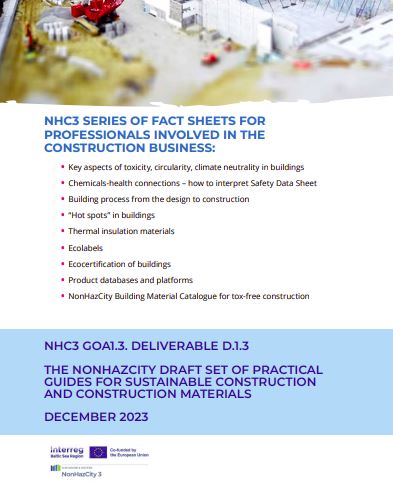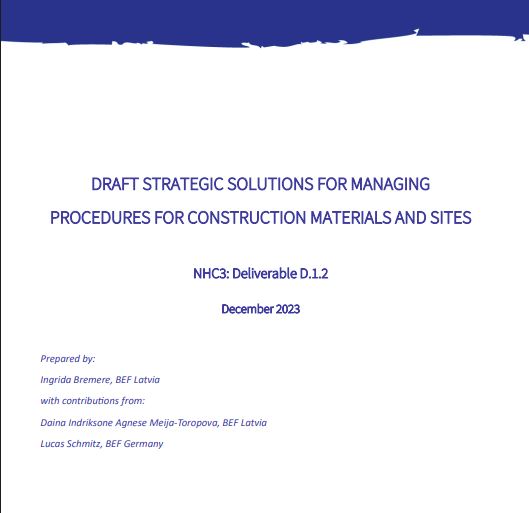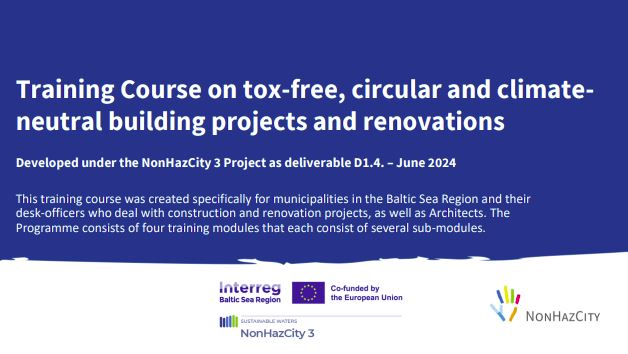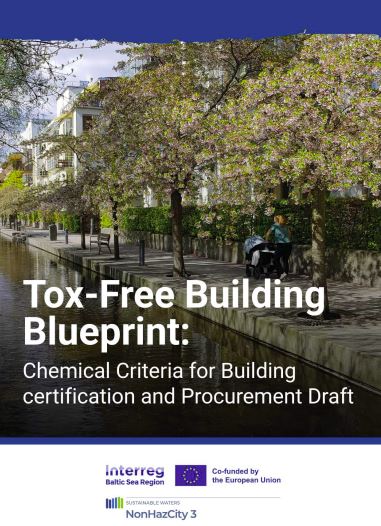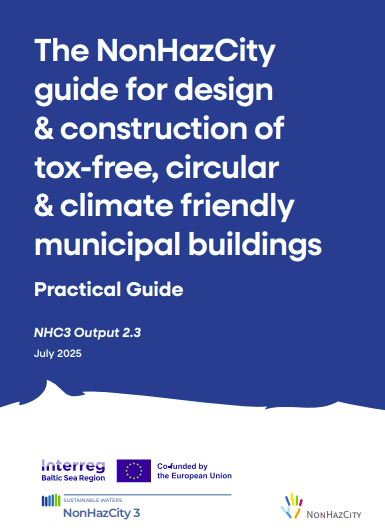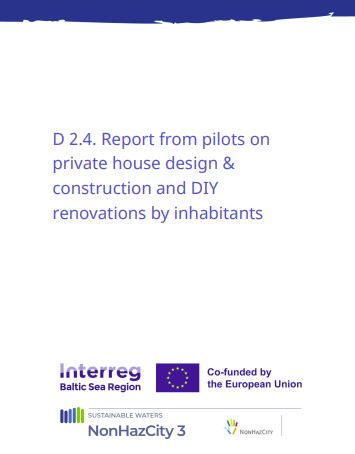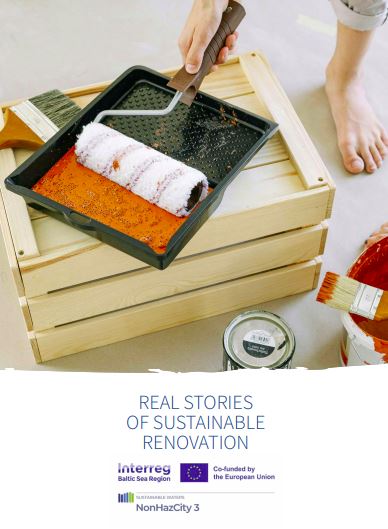The extension of the existing consumer app “Check(ED)”
The “Check(ED)” web application estimates exposure to
endocrine disruptors (EDs) such as bisphenols, phthalates, alkylphenols, and
brominated flame retardants in both home and workplace environments. It
provides results, indicating the level of exposure from specific areas in a
home or office setting, and offers personalised recommendations based on the
user’s exposure type, lifestyle, and residence. The estimation of ED exposure
is based on a scientific-data-driven approach, drawing data from reputable scientific
and medical journals, and is tailored to personal situations by incorporation
of socio-demographic, personal lifestyle, and daily habit data the user
provides. This makes the provision of individual recommendations aimed at
reducing ED exposure and associated health risks possible, which enhances the
users’ awareness regarding healthier lifestyle choices and habits. This is
especially effective as it is bound to a very common value of personal health.
This application was developed as a component of the “NonHazCity 2” project,
under the European Interreg Baltic Sea Region initiative, focused on risk
management and reduced use of chemical products in cities. It is now, in the
NonHazCity 3 project enhanced and expanded regarding renovation topics giving
the user a possibility for monitoring harmful substances and exposure from
renovation. The current version can be tested here: https://nhc.check-ed.eu/en/
Occurrence of substances of concern in BSR buildings, construction materials and sites
Urban environments are constantly evolving, with
construction and development playing a crucial role in shaping our cities.
These processes mean progress in many areas, however, they often come with
hidden dangers in the form of hazardous substances present in building
materials. The NonHazCity 3 project works towards changing the fact that
hazardous substances sneak into our buildings and neighbouring matrices. The
screening activities conducted within this project give insights to where
further, more extensive screening and research activities are needed to be able
to eventually eliminate the risks and create safer, healthier urban spaces. The
NonHazCity 3 project focused on five cities in the Baltic Sea Region: Tallinn,
Helsinki, Turku, Västerås, and Stockholm. The aim was to get a better
understanding of how building materials contribute to contamination in both
outdoor and indoor environments. To achieve this, the team conducted targeted
pollutant screenings across five matrices: construction materials, stormwater,
indoor dust and air, and residential wastewater. Although not all matrices were
screened in each location, significant findings emerged that shed light on the
presence and sources of hazardous substances.
BUILDING MATERIAL CATALOGUE for tox-free construction
Imagine healthy buildings. Natural, healthy, durable,
efficient. Picture a future where what we build with contributes to both human
well-being and the planet’s health. These materials come from renewable
sources, created with minimal environmental impact. They are designed for
efficiency and durability, ensuring they last. And when they reach their end of
life, they are reborn: transformed, repurposed, or recycled. Reducing waste,
conserving health, resources, and habitats. These materials make us feel good
because they symbolise a commitment to a brighter, responsible future. To make
this dream come true, people around the world are working on such materials.
There is still a long way to go, but we have also come a long way already. Let
us continue this journey together. With this catalogue, we invite you to
explore today’s sustainable materials (and more). This catalogue is dedicated
to promoting sustainable construction. Its aim is to provide a comprehensive
overview of a wide range of sustainable construction materials, their
ecological properties, applications, and contributions to a circular,
climate-neutral living environment, free of hazardous chemicals. Our intention
is to empower municipalities, building project leads, architects, designers,
contractors, homeowners, and DIY enthusiasts with the knowledge they need to
make sustainable choices when selecting construction materials for their
projects.
DIY Guide "Toxfree, circular and climate-friendly renovation of my home"
The do-it-yourself guide “Toxfree, circular and
climate-friendly renovation of my home” serves as a guideline for private
users who want to carry out renovation or construction work themselves. The
guide provides lists of different building materials (e.g. flooring, paints)
and their risk potential regarding hazardous substances, as well as information
on circularity and climate aspects. In addition to the material lists, the
guide includes advice on safer renovation, legal, health and environmental
aspects, indoor air quality, energy efficiency and waste management. The guide
also provides information on how to hire professionals who are required to use
as few hazardous substances as possible. To summarise, the guide is a helpful
tool for private users who want to build a healthy and environmentally friendly
home.
The Byggvarubedömningen® database - a tool for sustainable construction
The BVB database of assessed construction products shows the
product’s impact on people and the environment. Through the BVB data base
search tool the user can search for specific products or for a whole product
group enabling to make sustainable product choices. During the NHC3 project the
data base is continuously expanded with new product assessments. The BVB also
contains a Logbook tool that enables construction projects to document the
products they use. During the NHC3 project multilateral adaptations for English
speaking users were performed. The BVB system can be used by municipalities and
other stakeholders in the construction and real estate industry for
documentation, traceability, procurement, making sustainability requirements
and meeting the requirements of certification of buildings.
Step-by-step guide for the process management of toxfree construction at municipalities
The “Step-by-step guide for the process management of
toxfree, circular and climate-neutral construction at municipalities” is
developed to guide municipal specialists through various stages of construction
process applying the NHC3 three pillar approach. The Guide highlights aspects
of tox-free, circular and climate-neutral construction and gives
recommendations for selection and application of various methods and tools
starting with the conceptual decision-making stage, towards elaboration of a
building design, detailed planning and preparation of a construction project,
construction works including site management and verification. At the end of
each chapter a checklist is provided to help municipal specialists to
systematise the consideration of aspects and application of tools during the
construction process.
Fact sheets
The NHC3 series of fact sheets for professionals involved in
the construction business are prepared for advancing their knowledge on
chemicals issues and set them into relation to circularity of materials and
energy efficiency of buildings. Fact sheets highlight the NHC3 three pilar
approach and substances of concern in various construction materials/products,
show the chemicals-health connections, aspects to consider in the building
process from the design to construction, “hot spots” in a building where risks
related to toxicity, embodied emissions, heat losses, or circularity are
heightened. Fact sheets give an insight to ecolabelling of construction
materials and eco-certification of buildings as well as introduce various
useful data bases and the NHC3 Catalogue.
Draft strategic solutions for managing procedures for construction materials and sites
The “Draft strategic solutions for managing procedures for
construction materials and sites” aims to provide recommendations to the
strategic solutions and make them available at municipalities to unfold the
efficiency of managing procedures. The well-defined framework at the strategic
planning phase underlying the strategic solution is of support to back-up
initiatives for going beyond the conventional construction practices.
Sub-solutions to promote setting the level of ambitions, supply chain communication
and market dialogue are directed to enhance interaction with the construction
stakeholders. The best practice cases and learnings publication “Strategic
solution for managing hazardous substances in buildings and construction
materials: procurement, building certificates and restrictions” can be
found here – https://interreg-baltic.eu/wp-content/uploads/2025/07/O2.2_NonHazCiy-3-strategic-solutions-final.pdf
The NonHazCityTraining Course on tox-free, circular and climate-neutral building projects and renovations
The NonHazCity Training Course on tox-free, circular and
climate-neutral building projects and renovations is structured in 4
Modules: Module one is an introduction to harmful substances
in building materials and those used during construction. In a health
sub-modules the need for reduction is illustrated from a human health
perspective. Modules two and three are made specifically for
the training of tendering desk-officers and other interested staff at
municipalities, who seek to learn about means to steer their tendering
activities towards this reduction, substitution and avoidance of harmful
substances within their construction and renovation projects. While Module two
introduces necessary concepts, ideas and tools that could will facilitate and
served during implementation, Module three goes into everything related to
Green Public Procurement GPP. Module four is specifically
meant for architects who seek to cater to these municipalities, support them in
their effort and also learn how to keep and overview with the many different
kinds and sources of information on toxics. Architects are managing a panoply
of information from many different sources and these sub-modules suggests a
path to interpret and navigate the information.
Tox-free building blueprint - chemical criteria for building certification and procurement
Sustainable construction is becoming increasingly important
in the EU as regulatory requirements tighten, the goals of circular economy and
climate neutrality are pursued. One of the ways to achieve building
sustainability is to pursue building sustainability certification schemes.
These are standardised frameworks that evaluate and certify a building’s
environmental impact, occupant well-being and other sustainability aspects.
Another tool that helps to pursue building sustainability, especially in the
public sector is Green Public Procurement. It is seen as increasingly powerful
tool for sustainable economy. In this publication we analysed and compared
several common building certification systems as well as some national systems
from the project’s countries. We present our findings. The overview of chemical
criteria presented here can be utilised by smaller national or regional
building certification frameworks in their potential development seeking to
advance the level of human health and environmental protection from the effect
of harmful chemicals. The publication is also designed to help procuring
organisations, such as municipalities that are developing their capacity for
sustainable procurement, to apply additional environmental criteria focused on reducing
hazardous chemicals in construction. We present the summary of hazardous
chemical criteria, that are science based and could be used by the public
sector institutions as sustainability criteria in procurement of tox-free
buildings.
The NHC guide for design & constuction of tox-free, circular & climate friendly municipal buildings
This guide presents practical insights from pilot projects
carried out under the NonHazCity3 initiative, focusing on the processes of
design, construction, and renovation of tox-free, circular, and climate
friendly municipal buildings. It showcases best practices, drawing on
real-world case studies to illustrate both successful outcomes and lessons
learned.
Report from pilots on private house design & construction and DIY renovations by inhabitants
This technical report describes process and results of the
piloting activity developed within the NonHazCity3 project (“Reducing hazardous
substances in construction to safeguard the aquatic environment, protect human
health and achieve more sustainable buildings”). This activity tested project
solutions: DIY guide “Toxfree, Circular, and Climate-Friendly Renovation
of My Home”, Check(ED) App for inhabitants and Fact sheets for professionals.
The developed solutions aim to reduce hazardous substances (HS) in
construction. The solutions are based on a three-pillar approach—circularity,
climate neutrality, and tox-free construction—to minimize HS emissions from
materials, buildings, and sites, thereby protecting aquatic ecosystems and
human health.
Real stories of sustainable renovation
This technical report describes process and results of the
piloting activity developed within the NonHazCity3 project (“Reducing hazardous
substances in construction to safeguard the aquatic environment, protect human
health and achieve more sustainable buildings”). This activity tested project
solutions: DIY guide “Toxfree, Circular, and Climate-Friendly Renovation
of My Home”, Check(ED) App for inhabitants and Fact sheets for professionals.
The developed solutions aim to reduce hazardous substances (HS) in
construction. The solutions are based on a three-pillar approach—circularity,
climate neutrality, and tox-free construction—to minimize HS emissions from
materials, buildings, and sites, thereby protecting aquatic ecosystems and
human health.

